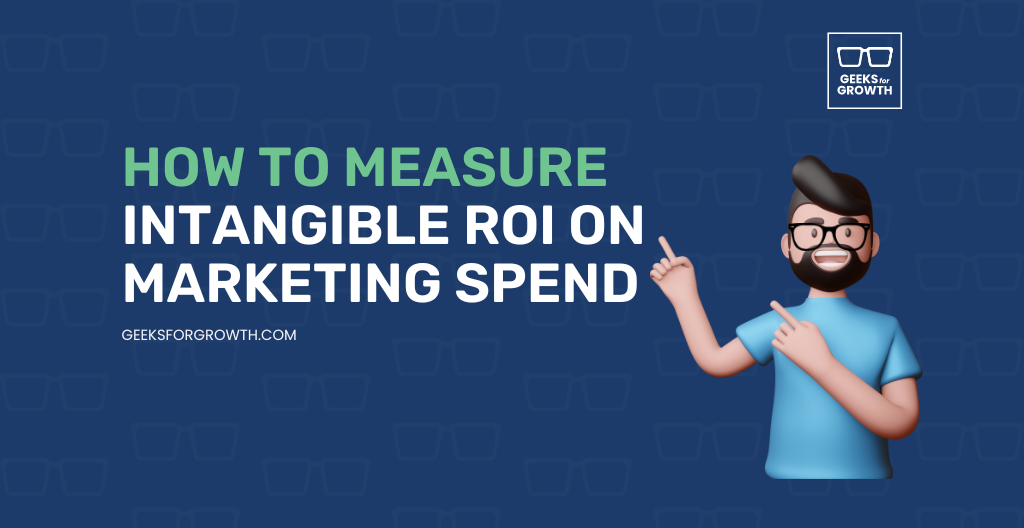
In the current digital marketing era, measuring the intangible ROI on marketing spend has become critical to successful ROMI strategies. As the global value chains become more competitive, the website ROI has emerged as a key performance indicator for prosperous growth. The innovative security solutions have allowed for the smooth transition of business processes, thereby enhancing productivity and growth return. Website benefit, therefore, is not just about profitability but also about the strategic asset it becomes in tapping new capabilities.
In the past years, there has been an inevitable shift towards data visualization, with web analysts using tools like Google Tag Manager to dissect complex data stories. This has further improved the website’s ROI formula, bringing it to the next level. By examining real-life examples and related resources, key vendors and growers have developed successful ROMI strategies, paving the way for an enhanced retail customer experience.
Define Your Goals
In defining your goals, first, determine the purpose of the campaign. This requires a deep understanding of the website ROI and how it contributes to the overall website benefit. Look for real-life examples of successful campaigns and the key performance indicators they used.
Next, set realistic and measurable goals. This requires a significant amount of time & effort but is a crucial step. Utilize a web analyst to understand recent trends and past years’ top digital analytics trends. Seek inspiration from top growers in digital marketing and apply these strategies to your campaign.
Determine the Purpose of Your Campaign
Emerging from the shadows of the previous section, the stage is now set for a smooth transition to defining the goals. The journey to the next level of digital marketing begins with defining the campaign’s purpose.
The campaign’s purpose is the compass guiding the ship; it keeps the focus on the destination in mind. It could be increasing website ROI, enhancing brand visibility, or driving more quality traffic.
Dive into real-life examples to gain a better understanding. Study the strategies of top growers in the industry. Analyze the top digital analytics trends. Uncover the mysteries of Google Tag Manager and venture into the realm of product management.
Set Realistic, Measurable Goals
In the spirit of a smooth transition from the purpose of your campaign, let’s now delve into setting realistic, measurable goals. Imagine a garden of top growers, every plant symbolizing a unique plan. The tallest ones are not necessarily the most valuable but are measured and pruned strategically. Similarly, in the realm of digital marketing, each goal is a seed. Plant it, measure its growth, and nurture it to fruition. Real-life examples show that a website’s benefit might range from increased traffic to improved user engagement. However, the real power lies in setting quantifiable objectives for each benefit.
Measure Brand Awareness
In the vast landscape of digital marketing, monitoring social media engagement is a beacon for identifying top growers. Analyzing real-life examples allows one to discern audience interaction patterns, thereby gauging brand recognition. This process brings forth the website benefit of tracking web traffic, a crucial tool for measuring brand awareness. Through careful monitoring, digital marketing professionals can identify top growers in web traffic. Studying these real life examples, they can then implement successful strategies to enhance their own brand’s visibility and reach. The amalgamation of social media monitoring and web traffic tracking provides a comprehensive picture of a brand’s digital footprint.
Monitor Social Media Engagement
Transitioning from goal-setting, it is crucial to delve into the world of brand awareness measurement. A pivotal focus within this domain is social media engagement. Monitoring social media engagement offers real-life examples of how an audience interacts with a brand. It’s akin to eavesdropping on a global conversation about the brand, which is quite invaluable in shaping future digital marketing strategies. Pay attention to likes, shares, comments, and retweets. They are the top growers of organic reach, which translates to brand awareness. Analyzing the sentiment behind these engagements provides insights into customers’ perceptions and attitudes towards the brand. Investing in social media monitoring tools equips businesses to be more responsive and adaptive in their digital marketing endeavors.
Track Web Traffic
Having set clear objectives, let’s switch gears to evaluating brand recognition by tracking web traffic. This proven method provides an in-depth analysis of brand awareness. Monitoring the flow of visitors to your website offers vital insights into your brand’s visibility online. Increased web traffic often signifies heightened brand awareness among your target audience. Utilize digital marketing tools to track these metrics, identifying and analyzing the top growers regarding visitor numbers. One can learn the best practices to attract and retain visitors by observing real-life examples. Remember, success in brand awareness is not just about reaching a wide audience but also keeping them engaged and interested.
Track Lead Generation
Under the broad umbrella of Track Lead Generation, two crucial subtopics emerge: Monitor Lead Capture Rate and Track Lead Conversion Rate. These play a paramount role in determining top growers in the competitive landscape. By vigilantly monitoring the lead capture rate, one can gauge the effectiveness of lead generation strategies. Simultaneously, tracking the lead conversion rate provides insight into how efficiently these captured leads are converted into customers. Both these metrics are instrumental in steering businesses toward sustained growth and dominance.
Monitor Lead Capture Rate
Transitioning from the realm of brand awareness, let’s now delve into the world of lead generation. Picture the spectrum of your customer journey, radiant with potential. Brand awareness shines brightly at one end, while lead capture casts an equally compelling glow at the other.
Among the top growers in the competitive market, a heightened focus on monitoring the lead capture rate is often seen as a distinguishing factor. This vital metric provides a panoramic view of the effectiveness of marketing efforts. It reveals how many potential customers are transitioning from being mere spectators to active participants interested in your offerings.
Scrupulous monitoring of this rate can illuminate the path forward, shedding light on the strengths and weaknesses of marketing strategies.
Track Lead Conversion Rate
Shifting the lens from brand awareness, let’s dive into the realm of lead generation. A crucial part of this process is tracking lead conversion rate, a clear indicator of whether the leads are turning into valuable customers.
Imagine a bustling garden full of budding plants, symbolizing the potential leads. The blossoming flowers among them represent the converted leads. The more the blooms, the better. Now, imagine a gardener meticulously keeping track of the number of “blooms.” This vigilant gardener mirrors the role that tracking lead conversion rates plays in businesses.
The flourishing blooms in the competitive business world often belong to the top growers. By carefully observing and nurturing their leads, these top growers ensure a higher conversion rate, resulting in a vibrant, thriving garden of customers.
Calculate Customer Acquisition Cost
Navigating the path of customer acquisition cost begins with determining the cost per lead. Picture a garden where each piece of information represents a budding flower, with the top growers highlighted as the most promising prospects. Understanding the financial investment required to nourish these buds illuminates the true cost of potential growth. Transitioning to the next subtopic, the focus deepens to analyze customer lifetime value. Envision the blossoming flowers representing loyal customers, their lifetime value reflecting the continuous harvest they provide. This in-depth analysis offers a comprehensive view of the overall investment, which is crucial for effective business planning.
Determine the Cost per Lead
Having mastered the art of tracking lead generation, it’s time to delve deeper into the financial dynamics of the operation. In the realm of customer acquisition, understanding how to determine the cost per lead is paramount.
As one of the top growers in the business arena, the cost per lead serves as a pivotal benchmark. It provides a clear vision of how much is spent to acquire a single lead. Begin by calculating the total marketing expenses over a specific period. This could include advertising costs, salaries for marketing personnel, and overheads. Then, divide this total by the number of leads generated in that period. The result is the cost per lead, a valuable metric for assessing the efficiency of marketing efforts.
Analyze Customer Lifetime Value
Having delved into the world of lead generation, a journey onward into the realm of customer lifetime value (CLV) beckons. Unraveling the complex tapestry of CLV involves a comprehensive analysis of the net profit attributed to the entire future relationship with a customer. This vital metric often serves as the bedrock for top growers and acts as a clarion call for companies to refocus their efforts around customer retention strategies.
The analysis of CLV involves peering into the depths of customer behavior, engagement, and purchasing patterns. A clear understanding of this value aids in identifying the true worth of customers over time. Thus, it empowers organizations to make informed decisions around marketing, sales, product development, and customer support. It’s like a compass guiding companies towards a sustainable future.
Analyze Engagement
Transitioning from the broad concept of analyzing engagement, let’s now delve into the specifics: monitoring click-through rates and tracking page views. These metrics serve as vital tools in recognizing the top growers in terms of audience engagement. Click-through rate helps identify which content prompts action, while page views shed light on overall content popularity. Together, they provide a clear picture of users’ interaction patterns, assisting in shaping future strategies for enhanced engagement.
Monitor Click-Through Rate
Transitioning from the previous discussion on customer acquisition cost, the following section delves into the vital aspect of engagement analysis. The first topic of focus: Monitoring Click-Through Rate.
Click-through rate, or CTR, serves as a crucial barometer of audience engagement. This metric measures the ratio of users who click on a specific link to the total viewers of the page. Among the top growers in terms of business success, constant monitoring of CTR stands high on the priority list. High click-through rates suggest that users find the content engaging and enticing. On the flip side, a low CTR indicates a need for content or visual improvements. Hence, constant vigilance on CTR becomes indispensable for the sustained growth of an online presence.
Track Page Views
Having just delved into the intricate process of calculating Customer Acquisition Cost, it becomes essential to now shift our focus towards another equally critical aspect of the online presence – tracking page views.
The realm of page views opens up a vista of insights, revealing patterns and trends that could be the key to understanding user behavior. The top growers in the business industry are those who have mastered the art of effectively tracking page views.
When embarking on this journey, it’s important to remember that every page view represents a potential customer’s interaction with the online platform. It’s a testament to the website’s relevance, attractiveness, and overall success.
In the realm of marketing, the journey toward becoming one of the top growers requires a comprehensive understanding of the nebulous ROI. It’s a trek that demands clearly defined goals, an acute sense of brand awareness, effective lead generation strategies, and meticulous calculation of customer acquisition costs.
The process doesn’t end there; an in-depth analysis of engagement is paramount. The ability to connect with the customer, understand their needs and wants, and create a strategy that aligns with those needs is the hallmark of a top grower. In this complex dance, the performance of each move, no matter how subtle, contributes to the ultimate ROI.






